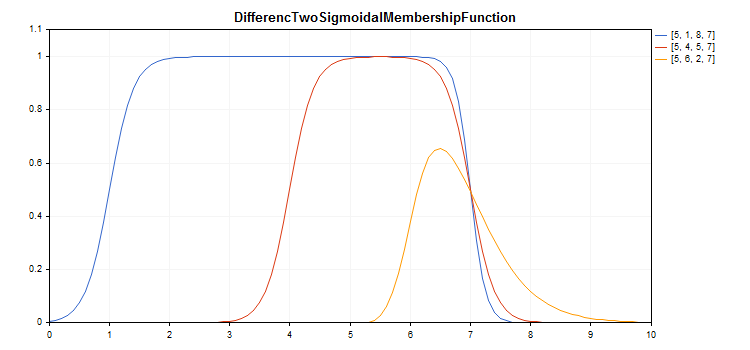CDifferencTwoSigmoidalMembershipFunction
Class for implementing the membership function in the form of a difference between two sigmoid functions with the A1, A2, C1 and C2 parameters.
Description
The function is based on a sigmoid curve. It allows creating membership functions with the values equal to 1 beginning with an argument value. Such functions are suitable if you need to set such linguistic terms as "short" or "long".

A sample code for plotting a chart is displayed below.
Declaration
class CDifferencTwoSigmoidalMembershipFuncion : public IMembershipFunction |
Title
#include <Math\Fuzzy\membershipfunction.mqh> |
Inheritance hierarchyCDifferencTwoSigmoidalMembershipFunction |
Class methods
Class method |
Description |
|---|---|
Gets and sets the first membership function slope ratio. |
|
Gets and sets the second membership function slope ratio. |
|
Gets and sets the first membership function inflection coordinate parameter. |
|
Gets and sets the second membership function inflection coordinate parameter. |
|
Calculates the value of the membership function by a specified argument. |
//+------------------------------------------------------------------+
|